Now that you have analyzed the data, engaged with community, identified needs and created goals, develop a realistic implementation plan based on current and future resource, partnership and funding scenarios. If there are anticipated gaps in funding, outline a plan to close the gap and how you will prioritize resources in the short term. Master plans are only as useful as you make them; to keep your master plan from collecting dust, follow these steps:
- Include action steps and implementation strategies — these can help put your plan in motion.
- Identify current and future funding mechanisms.
- Include a maintenance plan that prioritizes maintenance of current parks and parks that may be built in the future.
- Conduct an annual assessment of parks and open space to ensure your spaces continue to provide positive benefits to the community and that implementation steps are followed.
Implementation Plan
An implementation plan can keep your agency on track and help identify realistic goals. To create an implementation plan, start with the data and community values. Then, look at how you are currently serving the community and identify existing gaps. Marrying those two and creating objective metrics that prioritize community values will help prioritize projects. A numerical system for ranking projects based on community need and past investment can help objectively prioritize projects and establish an implementation plan based on equity metrics.
Implementation & Maintenance Timeline
To build trust and buy-in for your system-wide plan from community, elected officials and internal staff, it is important to have a few quick wins and set realistic expectations on an implementation timeline that includes programming, capital improvements and maintenance. Below are guidelines on short-, medium- and long-term projects.
- Short-term Projects/ Quick wins (6- to 12-month implementation):
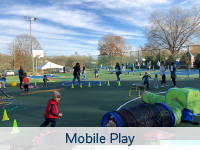
Pop-up demonstrations such as mobile play equipment. Learn more about mobile play.
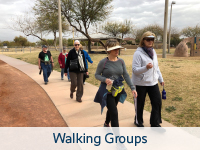
Park activation strategies that bring people to parks such as walking groups. Learn more about walking groups.
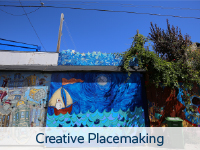
Pop-up creative placemaking that enhances cultural relevancy such as a mural. Learn more about the benefits of creative placemaking.
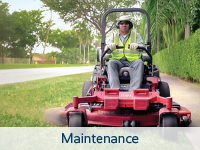
Maintenance improvements such as trimmed grass. Learn more about maintenance improvements for mowers.
- Medium-term Projects (1–3 years):
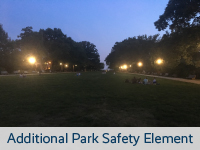
Adding park safety elements to an existing park such as added lighting. Learn more about safety elements.
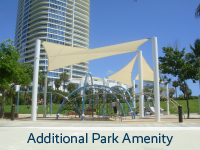
Adding a single park amenity to an existing park such as shade structures. Learn more about shade structures.
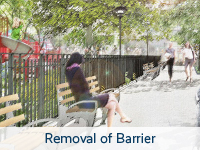
Removing barriers to entry such as fences and bushes obstructing access. Learn more about removing park barriers.
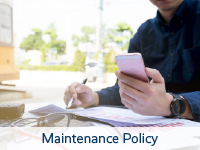
Update maintenance policies to set a quality standard and maintenance practices for every park. Learn more about maintenance policies.
- Long-term Projects (3+ years):
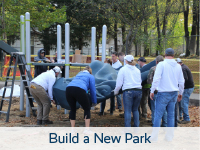
Renovating an existing park or building a new park. Learn more about building a new park.
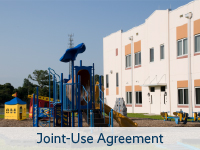
Creating shared use facilities such as those with schools. Learn more about joint-use agreements with schools.
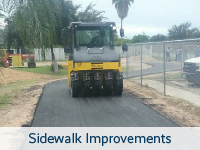
Improvements to sidewalks and pedestrian access to existing parks. Learn more about creating safe routes to parks.
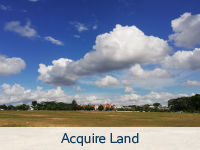
Acquiring land to build a new park. Learn more about acquiring land to improve park access.
Funding Plan
Creating both a maintenance and operations and a capital improvement funding plan is essential to implementation.
A maintenance and operations funding plan should outline how you plan to maintain your current parks and future upgrades. It is also important to identify what your current budget is unable to cover and specific funding strategies for closing the gap.
A capital improvement funding plan will allow you to specify what improvements can be made with current funding sources and where you could leverage additional resources.
Maintenance Plan
A maintenance plan should outline equitable policies and strategies to maintain current parks and predict maintenance needs of future park spaces. An equipment retention schedule can help you keep track of all your park assets and predict when you will need to upgrade and/or maintain those specific assets, so that you are not reliant on community to “call in” needed repairs.
Annual Assessment
Conduct an annual review to make sure that the plan is still relevant and that you don’t have any outstanding issues.
Incorporate strategies and goals to assess park standards on a yearly basis. Continuously look for community feedback and integrate those into the park system.
 Case Study: Play DC used an implementation framework to organize its action plan and ensure the most equitable and efficient strategies to reach its vision. This is used as a set of guideposts to keep the city moving on track. Check out “Charting a Course” for more information.
Case Study: Play DC used an implementation framework to organize its action plan and ensure the most equitable and efficient strategies to reach its vision. This is used as a set of guideposts to keep the city moving on track. Check out “Charting a Course” for more information.


